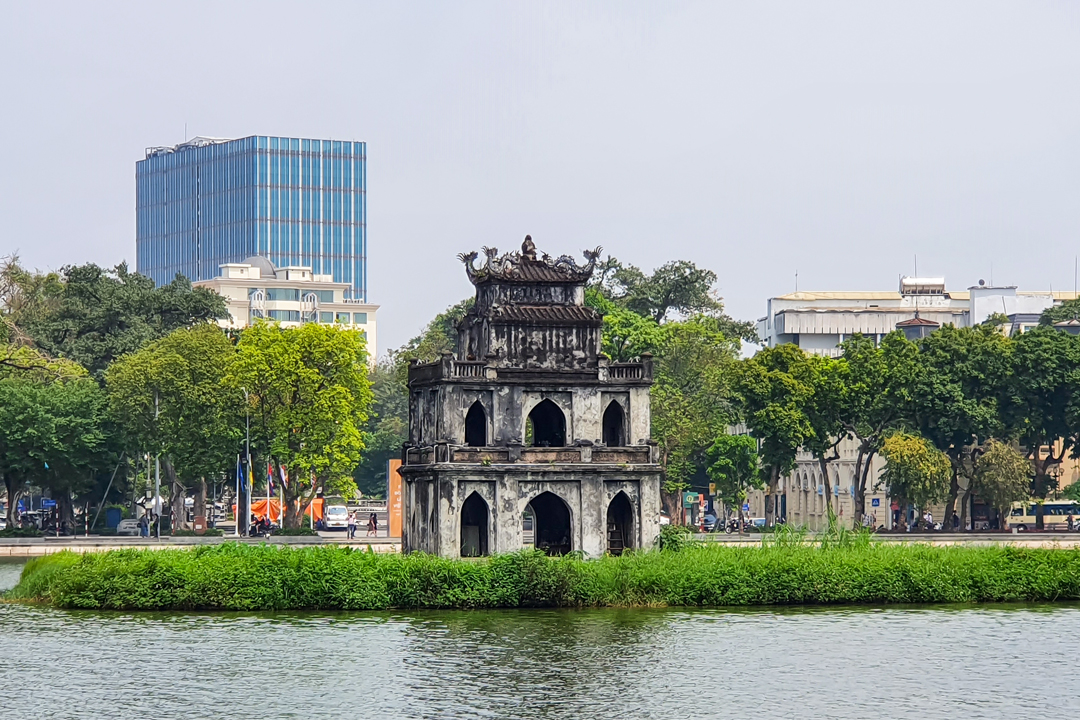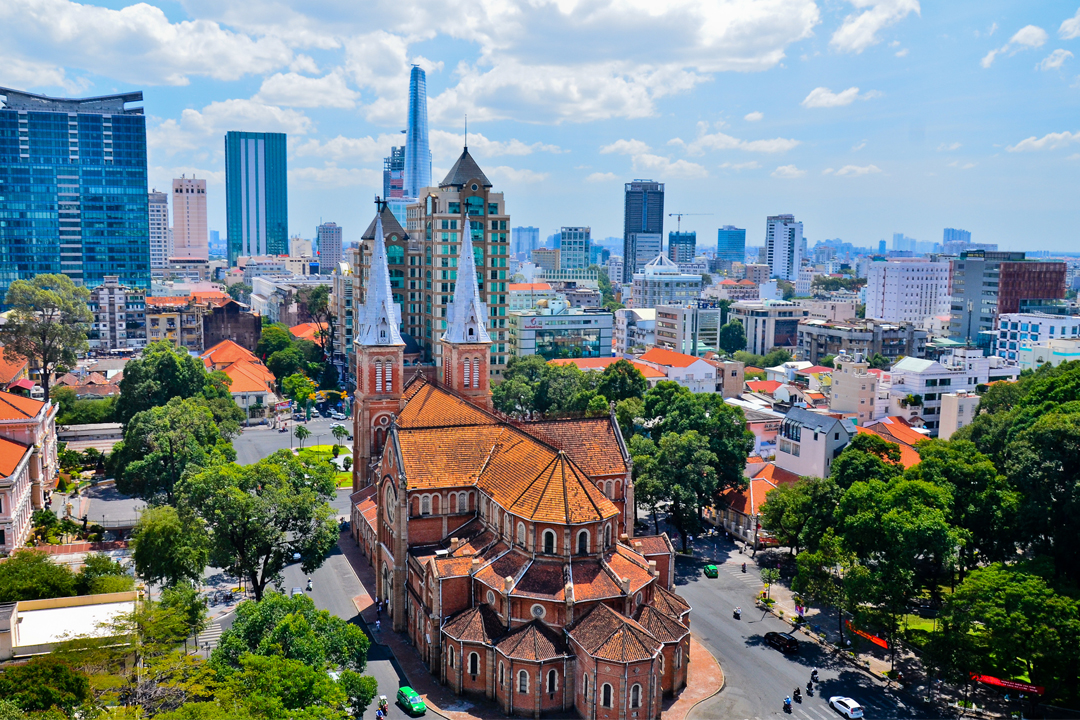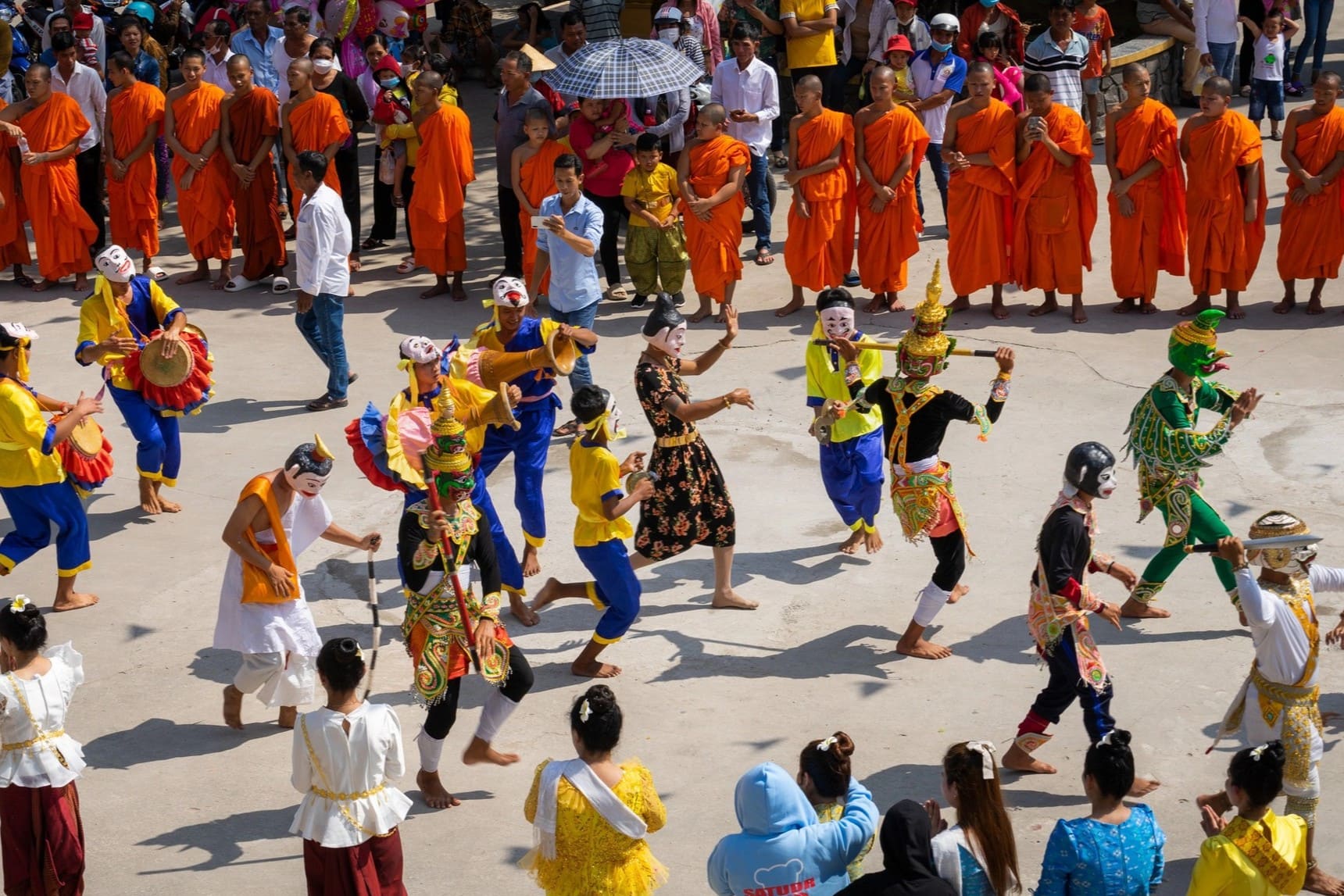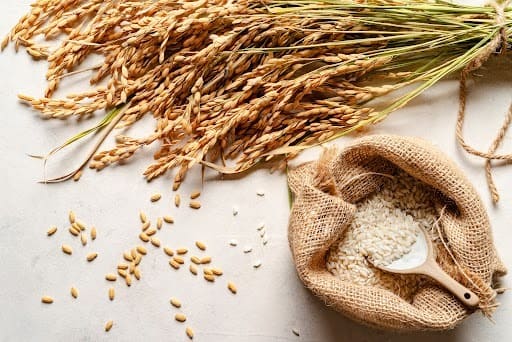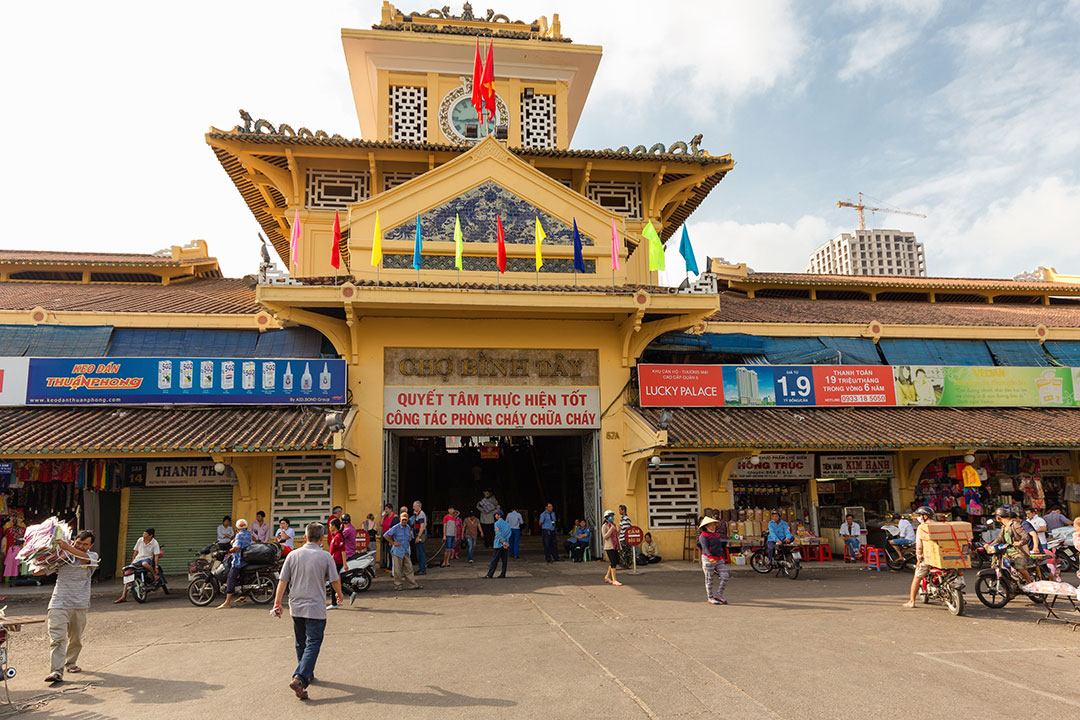Binh Tay Market: History, Architecture, Things To Do & Travel Guide
Binh Tay Market, located in Cholon, Ho Chi Minh City’s oldest Chinatown, stands as a living symbol of the city’s Chinese-Vietnamese heritage. With over a century of history, it remains a vibrant hub where trade, culture, and cuisine come alive. Far from a typical tourist spot, Binh Tay draws visitors seeking rare delicacies, traditional herbs, or stories from longtime vendors. With GTrip, you can explore this iconic market and experience an authentic glimpse into Saigon’s cultural and commercial life.
Overview of the Binh Tay Market
Location: No. 57A, Thap Muoi Street, Binh Tay Ward (formerly Ward 2, District 6), Ho Chi Minh City
Nestled in the heart of Ho Chi Minh City's vibrant Chinatown (Cholon), Binh Tay Market is one of the city's largest and most significant commercial centers. Primarily functioning as a major wholesale hub, it supplies goods not only to local vendors but also to the wider Mekong Delta region. The market offers an authentic, bustling atmosphere that deeply reflects the cultural fusion of the Vietnamese and Chinese communities.
Visitors can explore a vast array of products, from dried foods, spices, and textiles to household items, all at wholesale prices. Its distinctive architecture and energetic pace make it a captivating destination for those seeking a genuine local trading experience away from the main tourist trails.
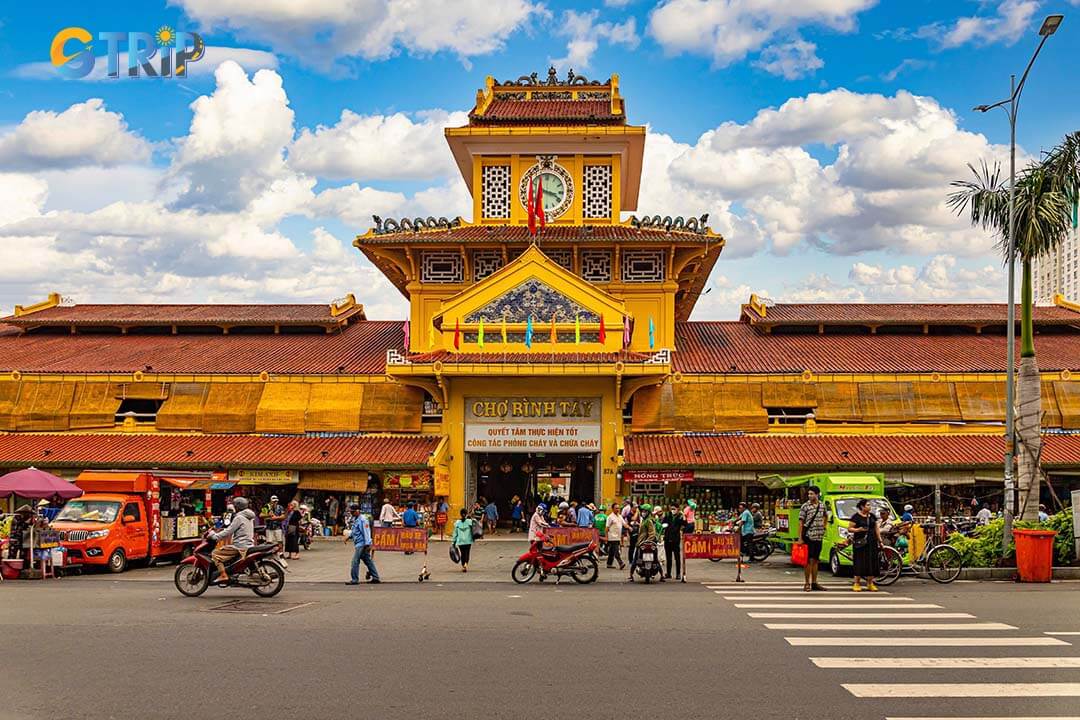
Located in the heart of Chinatown, Binh Tay Market is a historic trade center that embodies the rich cultural and architectural fusion of Vietnamese and Chinese heritage
History of Binh Tay Market
Binh Tay Market, located in the heart of Cholon (Ho Chi Minh City’s Chinatown), is not only a bustling commercial center but also a living monument reflecting the cultural fusion between the Vietnamese and Chinese communities. Often referred to as the “New Cholon Market,” it stands out as a unique symbol with its own distinct history and architecture.
The Legacy of Philanthropist Quach Dam
The history of Binh Tay Market is closely tied to Quach Dam, a wealthy Chinese merchant. In 1928, he financed the entire construction of the market and later donated it to the city authorities. In recognition of his contribution, a statue of him was placed prominently in the market’s central area after his passing. The market was built by the renowned Brossard et Mopin Company, ensuring top-quality engineering standards of the time.
Major Renovations and Revival
Over the decades, Binh Tay Market has undergone several significant renovations to preserve and enhance its structure:
- 1992: The first comprehensive renovation and repair.
- 2016 - 2018: The largest restoration project, with a total budget exceeding 100 billion VND, entirely funded by contributions from the market’s merchants. During the two-year renovation, over 1,000 stalls were temporarily relocated to a provisional market.
On November 15, 2018, Binh Tay Market officially reopened, featuring a refreshed appearance while faithfully preserving its historical architecture. Key elements such as the tiled roof, wooden rafters, and terrazzo floor were meticulously restored. Today, Binh Tay Market remains a major wholesale hub and an unmissable cultural and historical destination, continuing to thrive while honoring its rich heritage.
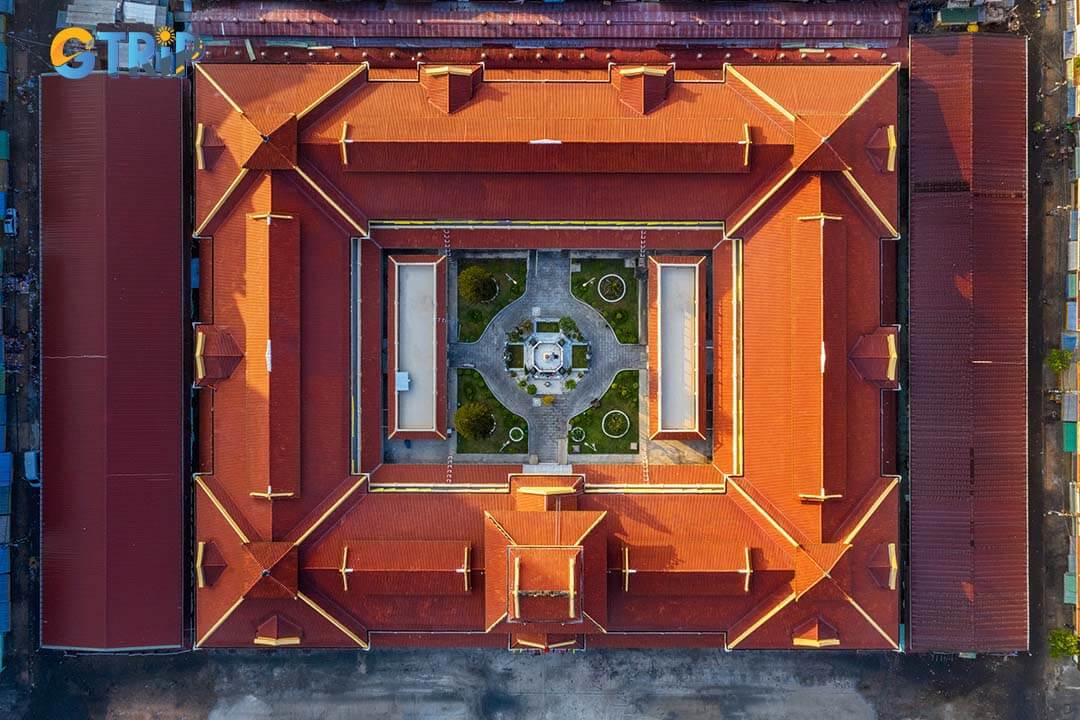
Binh Tay Market now blends historical charm with modern upgrades, offering a refined yet authentic space for both commerce and culture
Architectural and cultural influences
The market is located at No. 57A, Thap Muoi Street, Ward 2, District 6, and serves as a living testament to the architectural and cultural confluence of Chinese-Vietnamese heritage. Its unique attributes make it a focal point for those studying the integration of these two rich cultures.
Distinctive Chinese-Vietnamese architectural features
Binh Tay Market stands out with its architectural features, which epitomize the harmony of Chinese and Vietnamese styles. Its design incorporates elements from traditional Chinese architecture, such as the use of red brick, yellow tiled roofs, and intricately carved woodwork. These details are emblematic of Chinese aesthetics, bringing an authentic feel to the market's ambiance.
The market's central courtyard is a critical feature inspired by classic Chinese design concepts, creating a space that is functional and serves as a communal gathering spot. This feature fosters social interaction, embodying the communal essence that is central to Vietnamese and Chinese cultures. Moreover, the roof tiles, colored in yellow and green, symbolize prosperity and growth, reflecting the cultural importance of these colors in Chinese traditions.
The market's architecture also includes Vietnamese influences, visible in the spacious and well-ventilated interiors, promoting comfort amidst the tropical climate. This blend attracts tourists and shoppers but or historians and architects interested in cultural symbiosis.
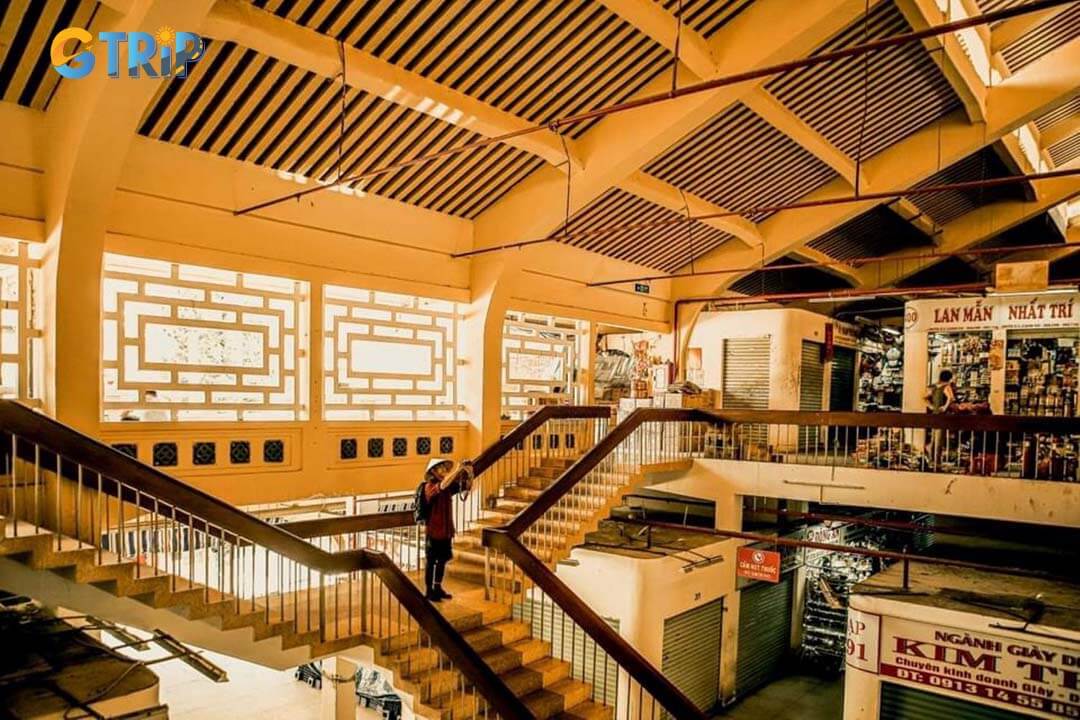
Binh Tay Market is a striking fusion of Chinese and Vietnamese architecture, where symbolic design meets practical function in a vibrant cultural setting
Cultural integration in daily market life
At Binh Tay Market, the fusion of cultures is not limited to architecture, it permeates the daily life and operations within. The market serves as a key site where Chinese and Vietnamese cultural practices seamlessly interweave. Vendors offer products that reflect both cultures, including Chinese traditional medicines and Vietnamese handicrafts, showcasing the daily adaptability and integration of both lifestyles.
This cultural integration is also reflected in the market's social dynamics. Chinese festivals, such as the Lunar New Year, are celebrated with as much enthusiasm as Vietnamese holidays, mirroring the cultural coexistence that defines the local community. The use of Cantonese, Mandarin, and Vietnamese reflects the market’s linguistic diversity, serving a wide range of customers while preserving cultural heritage.
The culinary offerings are a gastronomical embodiment of cultural blending. Here, you can find food stalls selling traditional Chinese dim sum alongside Vietnamese pho, illustrating a merging of culinary traditions that enhances the market's appeal. This confluence enhances the market's allure as a culinary destination.
Role of Binh Tay Market in preserving heritage
Binh Tay Market plays a pivotal role in preserving cultural heritage. As an epicentre of historical trading practices, it maintains traditional methods of trade that have been practised for centuries. This preservation is vital for economic reasons and cultural continuity in an ever-modernising urban environment.
The market also acts as a custodian of traditional craftsmanship. Silk fabrics, remnants of the ancient Silk Road, along with lacquerware and ceramics, remain essential elements of the market's offerings, preserving traditional craftsmanship. By providing a platform for artisans to showcase and sell their crafts, Binh Tay Market ensures that these age-old skills are not lost to modernization.
Education and awareness are key facets of the market's approach to heritage preservation. Through collaborations with cultural heritage organizations, Binh Tay Market engages the community and tourists in cultural education. This involvement includes guided tours and workshops that teach you about the history and significance of the market and its offerings. This educational approach preserves the past and instils respect and appreciation for cultural diversity and heritage among future generations.
Binh Tay Market is an architectural and cultural jewel in Ho Chi Minh City. Its distinctive architectural features and the seamless blend of Chinese and Vietnamese cultures contribute to its identity as both a marketplace and a cultural hub. The market's dedication to preserving heritage, coupled with its dynamic cultural integration, underscores its enduring significance in a rapidly changing urban landscape.
Top 7 things to do at Binh Tay Market
Binh Tay Market is a bustling commercial hub known for its wholesale shopping, cultural experiences, and diverse culinary offerings. If you're a business owner looking for bulk goods or a traveler eager to explore a traditional Vietnamese marketplace, there are plenty of activities to enjoy. Here’s a guide to making the most of your visit.
1. Shop for wholesale goods at good prices
Binh Tay Market is a paradise for bulk buyers, offering a vast selection of wholesale products at competitive prices. Vendors specialize in textiles, spices, traditional medicines, handicrafts, and souvenirs. Retailers and business owners can find high-quality fabrics, clothing, and accessories at lower rates when purchasing in large quantities. Similarly, the spice stalls offer fresh and aromatic ingredients sourced from local farms, making them a favorite among chefs and restaurateurs.
Bargaining is a key part of the shopping experience at Binh Tay Market, don’t be shy about asking for a better price. Learning a few basic Vietnamese phrases can help you build rapport and secure the best deals. Visiting early in the morning also increases your chances of getting better discounts, as many sellers offer special prices to their first customers of the day.
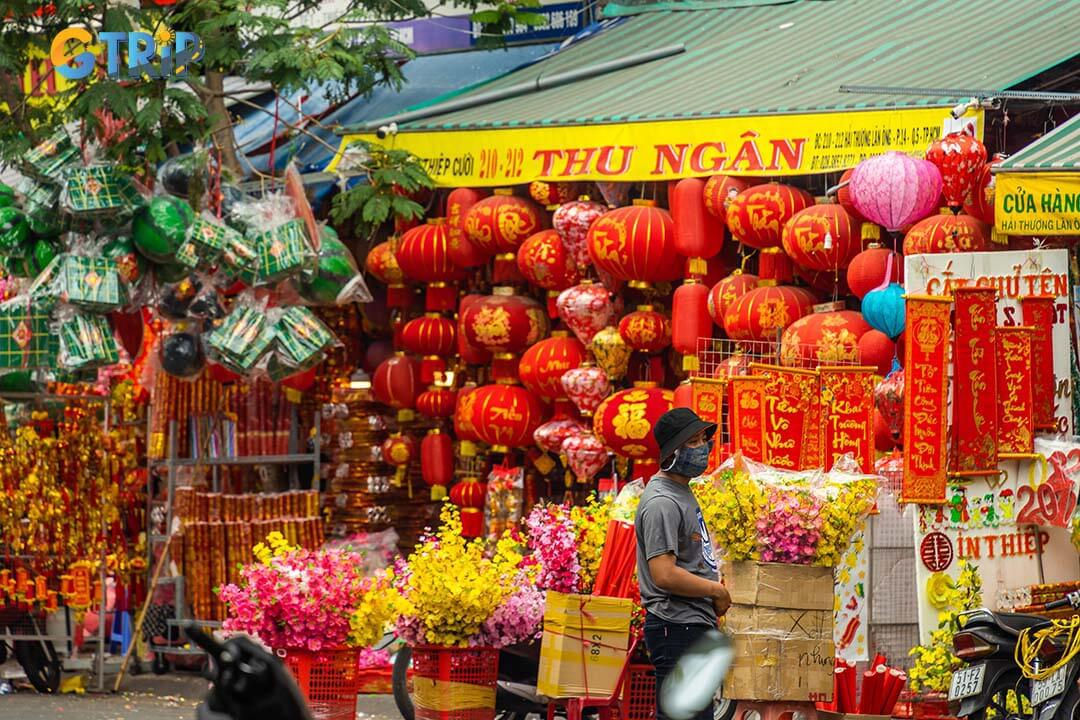
Binh Tay Market is perfect for bulk buyers seeking great deals on textiles, spices, handicrafts, and more
2. Admire the typical ancient architecture
Binh Tay Market is an architectural gem that blends Eastern aesthetics with early 20th-century Western construction techniques. Designed in the shape of a traditional Bagua, the market features spacious, well-ventilated interiors, layered yin-yang tile roofs, bright yellow walls, and intricately carved air vents that maximize natural light and airflow. The Central Tower stands out with its four-faced clock and a striking ceramic mosaic relief of “two dragons chasing a pearl”, showcasing fine Chinese craftsmanship. The main gate faces directly toward the Cho Lon bus terminal, a smart design choice that enhances accessibility and trade flow.
Inside, the market is logically organized with a spacious courtyard, neatly arranged stalls, and a central space that once housed a bronze statue of Quach Dam. Today, a bust funded by local vendors has replaced the original statue, which is now preserved at the Ho Chi Minh City Museum of Fine Arts. Traders and tourists continue to pay tribute at the site, honoring Quach Dam’s legacy and seeking good fortune. More than a bustling commercial hub, Binh Tay Market stands as a cultural and architectural landmark embodying the enduring spirit of Cho Lon’s vibrant heritage.
3. Explore traditional Chinese medicine stalls
The traditional Chinese medicine stalls offer an immersive experience into one of Cholon’s most time-honored practices. These vendors present an impressive array of herbs, dried roots, and various medicinal ingredients used in centuries-old healing methods. Many of the products sold are staples of TCM, known for their natural, holistic approach to health and wellness.
If you're interested in herbal remedies, looking for relief, or curious about their history, these stalls offer a unique opportunity. It allows you to delve into the therapeutic traditions that have been passed down through generations of Chinese and Vietnamese communities. The aroma of herbs and vibrant packages creates a sensory experience, immersing you in ancient healing practices and connecting you to the region’s cultural heritage.
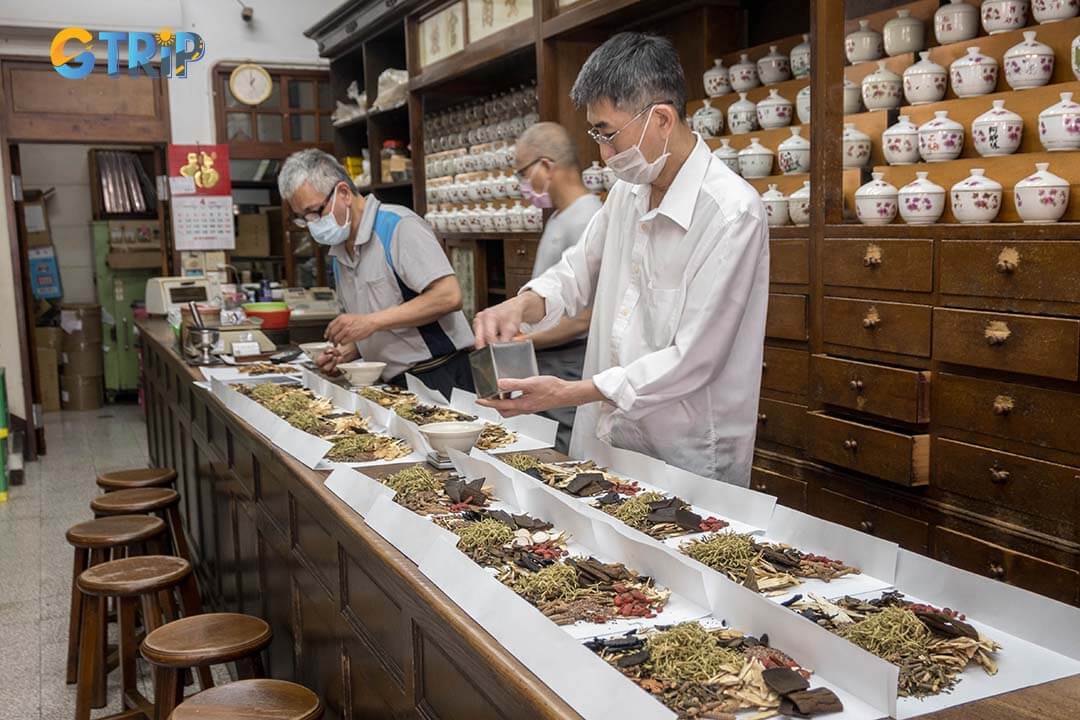
Step into Cholon’s heritage through Binh Tay Market’s traditional medicine stalls, where ancient healing practices come alive
4. Discover authentic Vietnamese and Chinese handicrafts
For those in search of memorable souvenirs or distinctive decorative pieces, Binh Tay Market is a treasure trove of authentic, handcrafted Vietnamese and Chinese goods. Artisans at the market display their skills through products like painted ceramics, lacquerware, woven bamboo items, and calligraphy paintings. Each piece tells a story, reflecting the deep-rooted artistic traditions of both cultures. These handcrafted items, often made by local artisans with generations of expertise, serve as lasting mementos or thoughtful gifts.
The intricate craftsmanship of these goods captures the essence of Vietnam’s and China’s cultural legacy, offering a perfect way to bring home a piece of history. These unique handicrafts, with their detailed designs and materials, serve as both beautiful decor and reminders of the vibrant cultural exchange at the market.
5. Experience culinary at Binh Tay Market
Known for its vibrant local food scene, Binh Tay Market is a must-visit for those eager to immerse themselves in Vietnamese and Chinese culinary traditions.
Local food offerings and must-try dishes
Binh Tay Market serves as a melting pot of local flavors, offering a wide variety of dishes that will delight any food enthusiast. Some essential dishes to try include:
- Pho: This iconic Vietnamese soup, featuring beef or chicken and fragrant herbs, is a staple.
- Banh Mi: The Vietnamese baguette sandwich, often touted for its perfect balance of flavors, is a quick yet fulfilling meal choice.
- Bo Kho: A fragrant and hearty beef stew that's best enjoyed with a French baguette.
- Banh Xeo: Known as "Vietnamese pancakes”, these savory crepes come filled with shrimp, pork, and bean sprouts.
- Che: This sweet dessert typically combines beans, fruit, and coconut milk for a refreshing end to the meal.
A stroll through the market will reveal these culinary delights, prepared by seasoned vendors who uphold authentic recipes passed down through generations. Each dish tells a story of tradition and skill, offering a true taste of the region's rich cultural heritage.
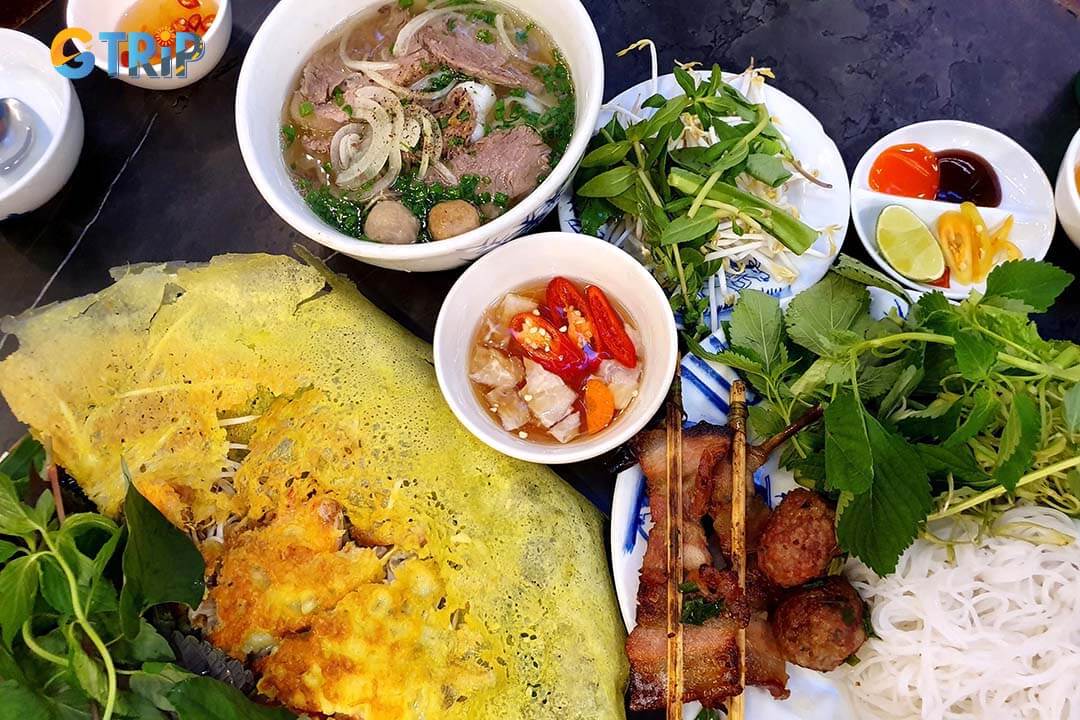
Binh Tay Market, where generations-old Vietnamese and Chinese dishes offer a flavorful journey through Cholon’s culinary heritage
Dishes influenced by Chinese and Vietnamese culinary traditions
The unique culinary offerings at Binh Tay Market are significantly influenced by the intersection of Chinese and Vietnamese traditions. This blend can be seen in dishes that incorporate elements from both cultures:
- Dim Sum: Reflecting Chinese culinary practices, these bite-sized offerings of steamed or fried dumplings are popular for breakfast.
- Hu Tieu: A noodle soup that exhibits the southern Vietnamese adaptation of a Chinese-inspired dish, often seen with clearer broth and more herbs.
- Cong You Bing: Also known as scallion pancakes, this dish reflects a more Chinese influence, offered as a crispy, savory treat.
The culinary offerings at Binh Tay Market provide more than just sustenance, they offer a window into the rich cultural tapestry that makes up Vietnamese and Chinese heritage. The lively chatter of vendors and the irresistible aromas in the air create an unforgettable sensory experience, immersing visitors in a unique culinary adventure.
6. Engage with local vendors and learn about their jobs
One of the most rewarding aspects of visiting Binh Tay Market is interacting with local shop owners. Many vendors have been running their businesses for generations, carrying on family traditions of trade. Engaging in conversations can offer insights into the origins of their products, their cultural significance, and even recommendations for hidden gems within the market.
Binh Tay Market is more than just a shopping destination - it’s a cultural experience filled with opportunities to explore history, cuisine, and local craftsmanship. If you're hunting for wholesale deals, tasting street food, or discovering traditional handicrafts, there’s always something exciting to do at this historic marketplace.
7. Offering incense to Quach Dam, the “God of Wealth” of Binh Tay Market
Visitors to Binh Tay Market are drawn to its unique Eastern architecture, vibrant atmosphere, local cuisine, and the market's special spiritual significance. He was the person who funded the construction of the market in 1928 and later donated it to the city, and he is regarded as the “God of Wealth” by the local vendors.
Today, a bust of Quach Dam stands in the market's central courtyard, surrounded by a lotus pond and resting benches. Every day, many vendors and locals come to light incense to express their gratitude to the founder and to pray for good fortune and prosperity in business. This spiritual practice is a unique cultural feature, reflecting the long-standing bond between the market and the Chinese-Vietnamese community in the Cholon area.
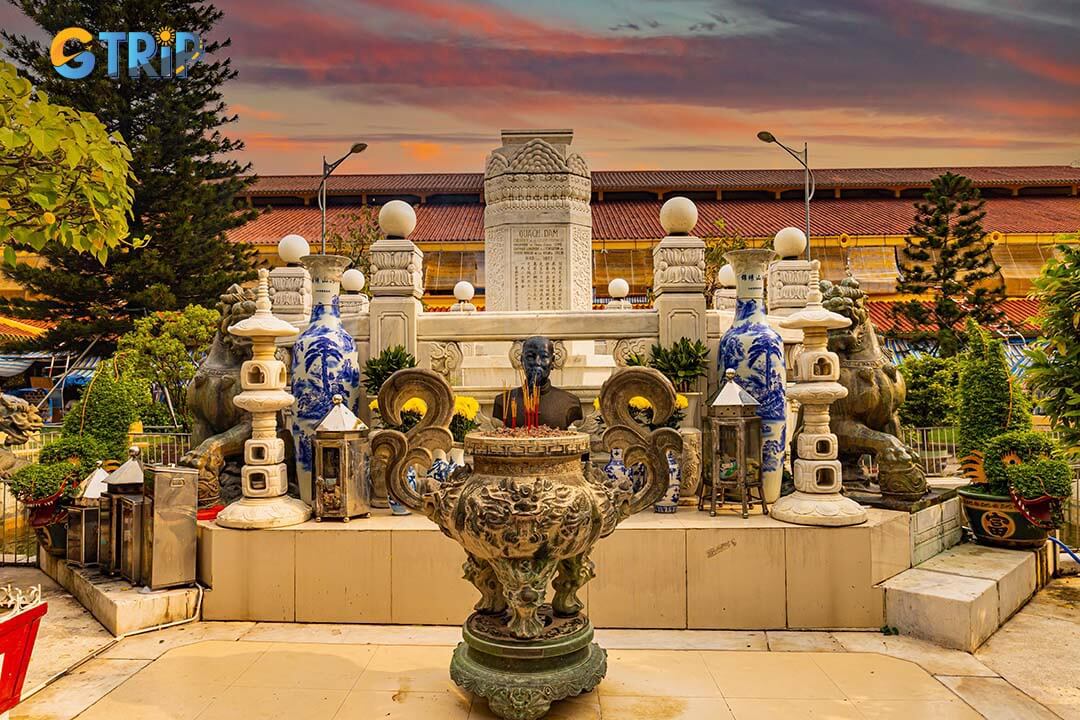
Binh Tay Market captivates with its unique architecture, cuisine, and spiritual significance, where visitors honor Quach Dam's legacy and pray for prosperity
Operating hours and best times to visit during the day
Binh Tay Market is open daily from around 2:00 AM to 11:00 PM, offering a full day of shopping and local experiences. The market closes between 11:00 PM and 2:00 AM for restocking and preparation for the next day.
Best time to visit
For those seeking a more vibrant, bustling atmosphere, visiting early in the morning is ideal, when the market is busy with vendors setting up and locals preparing for the day. However, if you prefer a quieter, more relaxed experience to admire the market’s unique architecture, it's best to visit during midday or the late afternoon. At these times, the market is less crowded, allowing for a more peaceful exploration of its cultural and architectural features. If you want to dive into the hustle of commerce or enjoy a more serene visit, Binh Tay Market offers a memorable experience at any time of day.
How to get to Binh Tay Market?
Binh Tay Market is located at No. 57A, Thap Muoi Street, Binh Tay Ward (formerly Ward 2, District 6), Ho Chi Minh City. Its vibrant atmosphere, rich history, and architectural beauty make it a must-visit destination for both locals and tourists. If you're planning to explore this historic market, knowing how to get there is essential for a smooth experience. Here’s a detailed guide on how to reach Binh Tay Market from various points in the city.
By taxi or ride-hailing services
The easiest way to reach Binh Tay Market is by taxi or ride-hailing apps like Grab, Xanh SM, BeCar, or Vinasun, especially if you're not familiar with public transport. This option provides door - to - door service and avoids the hassle of navigating the city's streets.
- Cost: The fare typically ranges from 60,000 VND to 100,000 VND, depending on your starting point.
- Duration: Depending on traffic, the journey usually takes between 20 - 30 minutes from District 1, the city center.
By public bus
Public buses are an affordable way to get around Ho Chi Minh City. Several bus lines pass through or near Binh Tay Market, offering both locals and tourists an easy way to reach the market without breaking the bank.
- Bus routes: Some of the most common buses that stop near Binh Tay Market include Bus 56, Bus 70, and Bus 56.
- Cost: A bus ticket costs around 7,000 VND (approximately $0.30), making it the most economical option.
- Duration: The duration of your bus ride can vary depending on traffic and your starting location. From District 1, it may take 30 - 40 minutes.
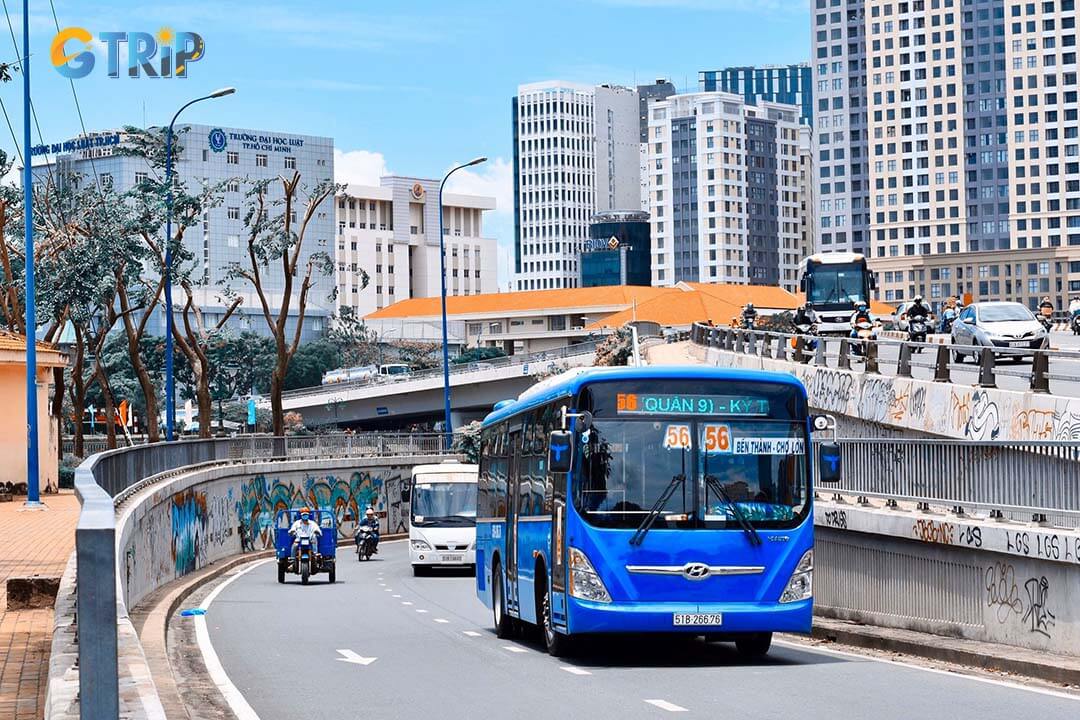
You can take bus 56 to get to Binh Tay Market for a budget-friendly option
By motorbike (Rent or taxi)
Motorbikes are an iconic part of Ho Chi Minh City’s transportation landscape. If you prefer a faster and more flexible option, renting a motorbike or hiring a traditional motorbike taxi (known as "xe om") is a great choice.
- Motorbike rental: Rental shops in District 1 offer motorbikes for as little as 100,000 VND per day (around $4.25). Make sure to bring a valid driver's license and wear a helmet for safety.
- Xe om (traditional motorbike taxi): For a more direct option, a motorbike taxi can take you to Binh Tay Market quickly. The fare typically ranges from 30,000 VND to 60,000 VND (approximately $1.25 to $2.50), depending on the distance.
- Duration: A motorbike ride can get you to Binh Tay Market from District 1 in about 15 - 20 minutes, depending on traffic.
By walking
If you're staying close to Binh Tay Market, walking could be a pleasant way to reach the market, especially if you enjoy exploring the streets and local neighborhoods. This allows you to immerse yourself in the sights and sounds of Ho Chi Minh City.
- Distance: Depending on your starting point, Binh Tay Market is within walking distance from many locations in the Cholon area.
- Duration: If you're walking from nearby attractions, the journey should take around 10 - 20 minutes.
- Tip: Make sure to bring sunscreen and wear comfortable shoes, as the weather can be hot and humid, particularly during midday.
Other attractions to enhance your visit
Visiting Binh Tay Market is a cultural experience in itself, steeped in history and bustling commerce. Yet, its strategic location in District 6 offers more than just an authentic market atmosphere. Exploring the nearby attractions can significantly enrich your visit, allowing you to fully immerse yourself in the vibrant fabric of Ho Chi Minh City's diverse cultural tapestry.
Thien Hau Pagoda (1.5 km)
One of the most captivating landmarks near Binh Tay Market is the Thien Hau Pagoda, a quintessential showcase of Chinese architecture and religious beliefs. Dedicated to the Lady of the Sea, Thien Hau, the temple plays an integral role in the spiritual life of the local community. It reflects the deep historical ties between the city's Chinese-Vietnamese population and their maritime traditions. You can admire its intricate carvings, ornate statues, and serene atmosphere. The pagoda is a place of worship and a cultural hub where you can observe traditional ceremonies, particularly during festivals. It’s bringing to life the vibrant syncretism of Vietnamese and Chinese cultural elements.
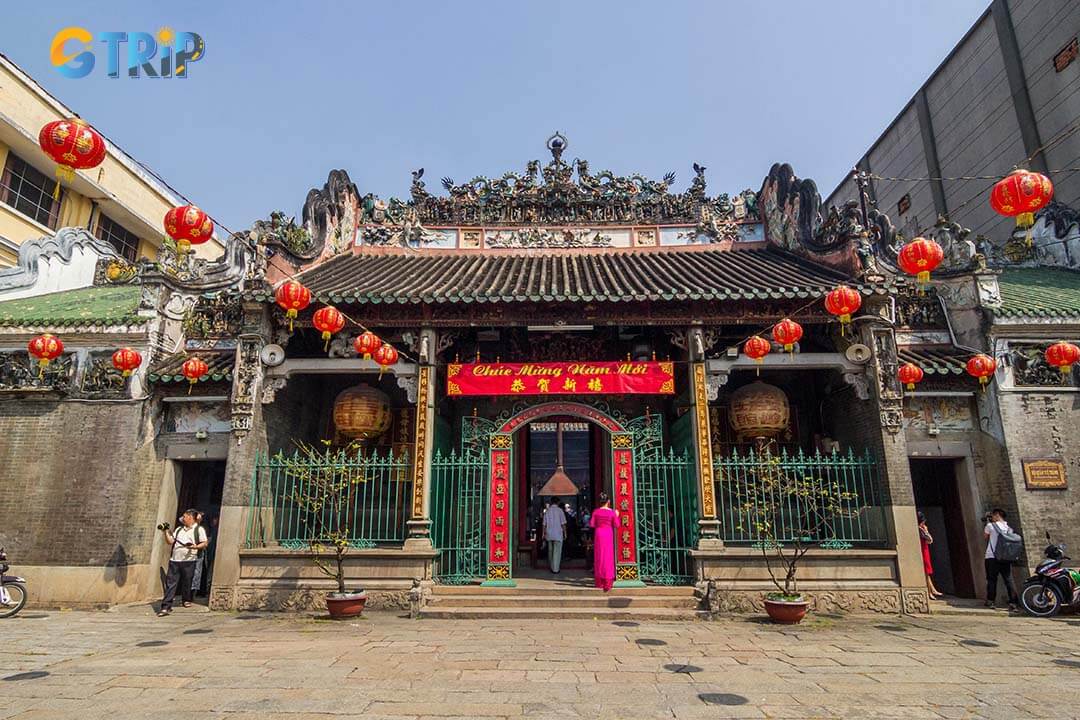
The Thien Hau Pagoda showcases Chinese architecture and is dedicated to the Lady of the Sea, highlighting the cultural ties of the local Chinese-Vietnamese community
Ho Thi Ky Flower Market (4.1 km)
Dubbed the largest flower market in Ho Chi Minh City, Ho Thi Ky Flower Market is a sensory delight. This vibrant marketplace is where florists and traders source fresh flowers from Da Lat, the Mekong Delta, and even Thailand. Strolling through its narrow alleys, you’ll find endless rows of roses, orchids, chrysanthemums, and exotic blooms at wholesale prices. The market also features a Cambodian street food alley, where you can try nom banh chok (Khmer noodle soup) and grilled beef skewers with prahok dipping sauce.
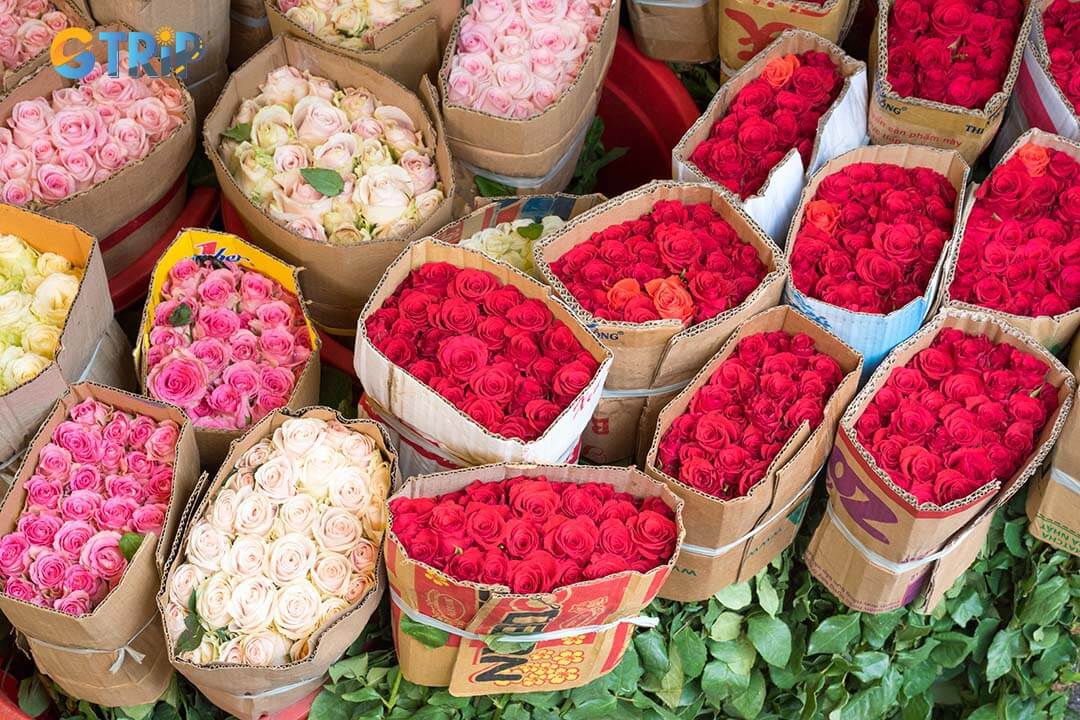
Ho Thi Ky Flower Market offers a colorful array of fresh flowers and Cambodian street food, making it a vibrant sensory experience
Ben Thanh Market (7 km)
Adjacent to Binh Tay Market, several other markets offer unique shopping experiences, diversifying your visit. Ben Thanh Market, located a short distance away in District 1, is often considered the quintessential Vietnamese market, providing a more tourist-focused experience. Here, you’ll find an array of local handicrafts, souvenirs, and street food, thus complementing the wholesale focus of Binh Tay. Similarly, the An Dong market is renowned for its rich fabric and garment selection, perfect for visitors interested in Vietnamese textiles. These markets together form a comprehensive mosaic of Ho Chi Minh City's commerce, guaranteeing an expansive retail journey from local wholesale treasures to vibrant retail options.
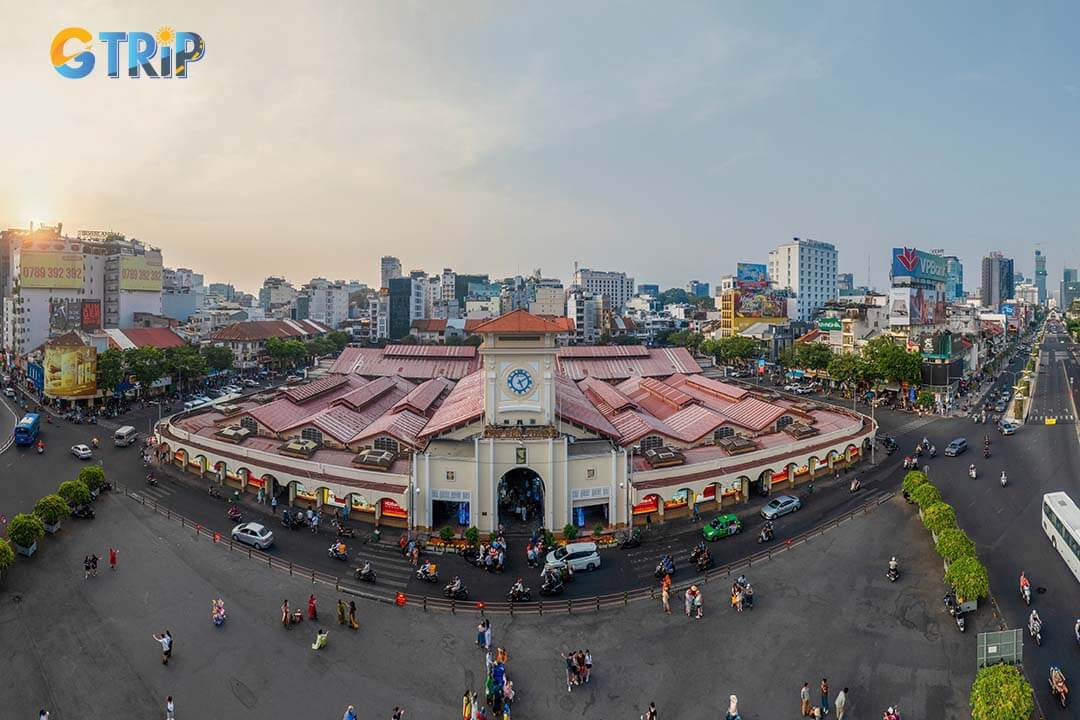
Ben Thanh Market offers diverse shopping experiences, from tourist-friendly souvenirs to rich selections of fabrics and garments
Practical tips for visitors
Binh Tay Market can be an exciting experience, but like any busy marketplace, it’s important to be aware of a few key things to make your visit smoother. Here are some essential tips to keep in mind:
- Bargain for a better price: Don’t hesitate to negotiate if you feel the price is too high.
- Watch your belongings: Keep an eye on your bags and valuables, especially in crowded areas.
- Be cautious with traffic: The streets around the market can be busy, so stay alert when crossing or walking near roads.
- Visit during off-peak hours: To avoid the crowds, try visiting early in the morning or late in the afternoon.
- Wear comfortable shoes: You’ll be walking a lot, so make sure your shoes are comfortable for exploring the market.
- Stay hydrated: The market can get hot, so keep a bottle of water with you, especially in the summer months.
By taking the time to explore Binh Tay Market and the surrounding attractions, you’ll gain a fuller and more meaningful cultural experience. Learning about its history, admiring its architecture, trying local products, and connecting with the neighborhood’s heritage all add depth to your visit. With a clearer understanding of how to navigate the market and when to go, your trip becomes smoother and more enjoyable. Apply these insights and book a Ho Chi Minh City Tour with GTrip to make your journey even more enriching and memorable.

